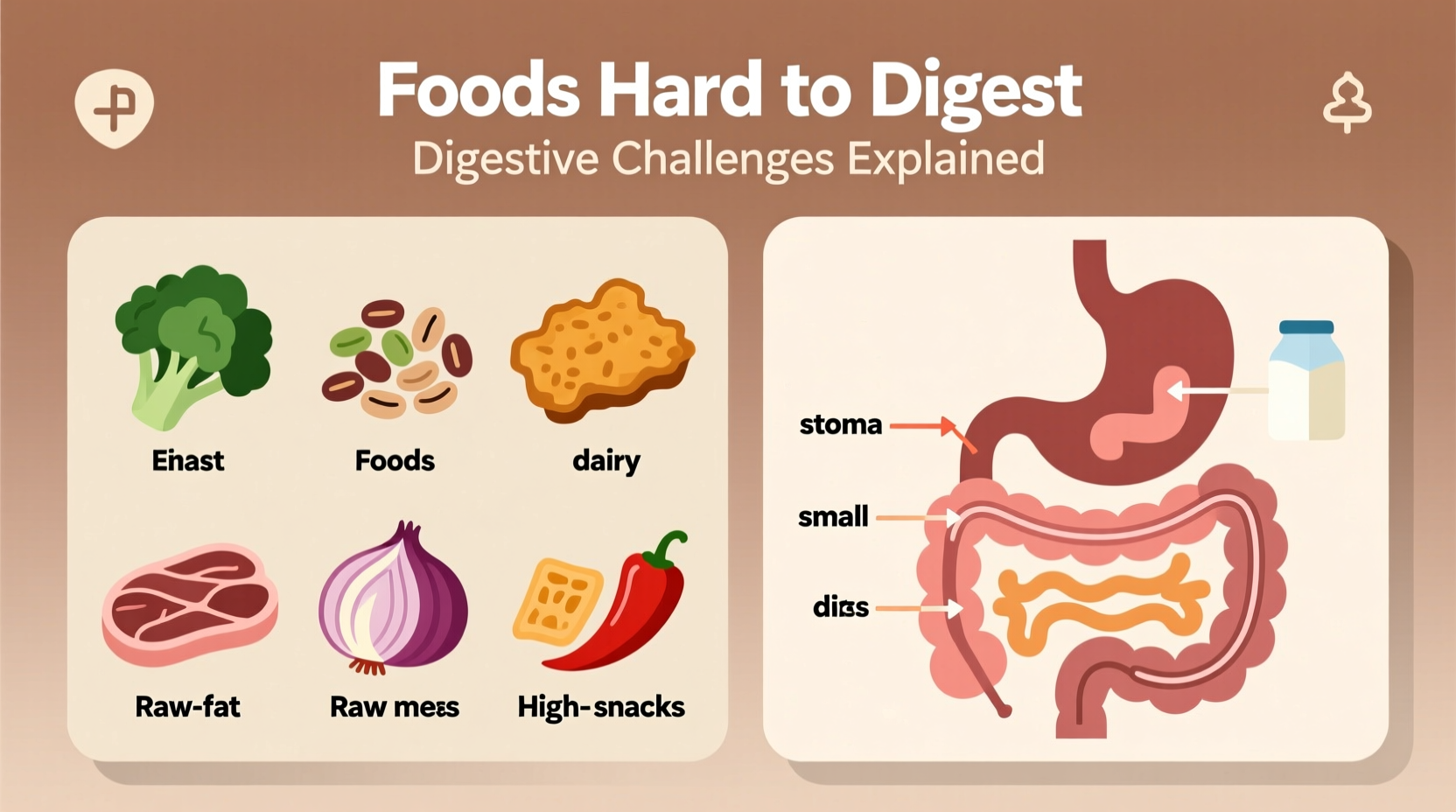If you've ever felt uncomfortably full after a meal or experienced unexpected digestive distress, certain foods might be to blame. Understanding which foods challenge your digestive system helps you make informed choices that support gut health and overall wellbeing. This guide identifies the most common digestion troublemakers, explains why they cause problems, and offers practical solutions you can implement today.
The Science Behind Digestion Challenges
Your digestive system breaks down food through mechanical and chemical processes. Some foods contain components our bodies lack specific enzymes to process fully. For example, many adults produce less lactase enzyme after childhood, making dairy digestion difficult. Other foods contain complex fibers or sugars that gut bacteria ferment, creating gas as a byproduct.
According to the National Institute of Diabetes and Digestive and Kidney Diseases, proper digestion depends on multiple factors including enzyme production, gut motility, and microbiome balance. When any element falters, previously well-tolerated foods can suddenly become problematic.
Foods That Challenge Your Digestive System
| Food Category | Why It's Hard to Digest | Common Symptoms | Who's Most Affected |
|---|---|---|---|
| Legumes (beans, lentils) | High in raffinose, a complex sugar requiring specific gut bacteria | Bloating, gas, cramping | Everyone, especially those with IBS |
| Dairy products | Lactose requires lactase enzyme many adults lack | Diarrhea, gas, abdominal pain | Lactose intolerant individuals (65% of global population) |
| Cruciferous vegetables | Contain raffinose and high fiber content | Gas, bloating | People with sensitive digestion |
| Fried and fatty foods | Slow gastric emptying, require more bile production | Heartburn, nausea, diarrhea | Those with gallbladder issues or GERD |
| Artificial sweeteners | Sorbitol and mannitol aren't fully absorbed | Gas, diarrhea, cramping | Everyone in large quantities |
Why Individual Responses Vary
Digestive tolerance differs significantly between individuals. The American Gastroenterological Association notes that what causes severe discomfort for one person might be perfectly tolerable for another. This variation stems from differences in gut microbiome composition, enzyme production levels, and digestive tract sensitivity.
Consider these context boundaries when evaluating your own reactions:
- Quantity matters: Small portions of problematic foods often cause no issues
- Preparation method: Cooking breaks down fibers that cause problems when raw
- Combination effects: Pairing difficult foods with digestive aids can improve tolerance
- Current health status: Temporary illness can worsen usual tolerance levels
When Digestion Problems Signal Something Serious
Occasional digestive discomfort affects nearly everyone. However, persistent symptoms lasting weeks warrant medical evaluation. The Mayo Clinic identifies these red flags requiring professional consultation:
- Unintended weight loss alongside digestive issues
- Blood in stool or vomit
- Severe pain disrupting daily activities
- Nighttime symptoms waking you from sleep
- Symptoms worsening over time rather than improving
Chronic digestive issues could indicate conditions like irritable bowel syndrome (IBS), inflammatory bowel disease (IBD), or food intolerances requiring specific management approaches.
Practical Strategies for Better Digestion
Instead of eliminating entire food groups unnecessarily, try these evidence-based approaches:
- Implement gradual changes: The Monash University FODMAP research shows slowly introducing potentially problematic foods helps build tolerance
- Try strategic food pairing: Combining beans with epazote (a traditional Mexican herb) significantly reduces gas production according to ethnobotanical studies
- Modify preparation methods: Soaking beans overnight and changing the water before cooking removes some indigestible sugars
- Consider timing: Eating difficult foods earlier in the day gives your system more time to process them
- Track your responses: Keep a detailed food and symptom journal for at least two weeks to identify personal triggers

Building a Digestion-Friendly Diet
A balanced approach works better than strict elimination. The Academy of Nutrition and Dietetics recommends:
- Gradually increasing fiber intake to allow gut adaptation
- Staying hydrated to support fiber's digestive benefits
- Incorporating probiotic-rich foods like yogurt and fermented vegetables
- Chewing thoroughly to begin digestion in the mouth
- Eating regular meals to maintain consistent digestive rhythms
Remember that digestive health evolves throughout life. What caused problems in your 20s might become perfectly tolerable in your 40s as your gut microbiome changes. Regularly reassess your tolerance levels rather than maintaining permanent restrictions.
When to Seek Professional Guidance
Registered dietitians specializing in gastrointestinal health can provide personalized plans based on your specific symptoms and medical history. They might recommend elimination diets like the low-FODMAP approach under proper supervision, which has shown 76% effectiveness in managing IBS symptoms according to clinical studies published in Gastroenterology.
Working with healthcare professionals ensures you're addressing actual problems rather than unnecessarily restricting your diet. They can also help distinguish between food intolerances (digestive issues) and food allergies (immune responses), which require different management approaches.











 浙公网安备
33010002000092号
浙公网安备
33010002000092号 浙B2-20120091-4
浙B2-20120091-4